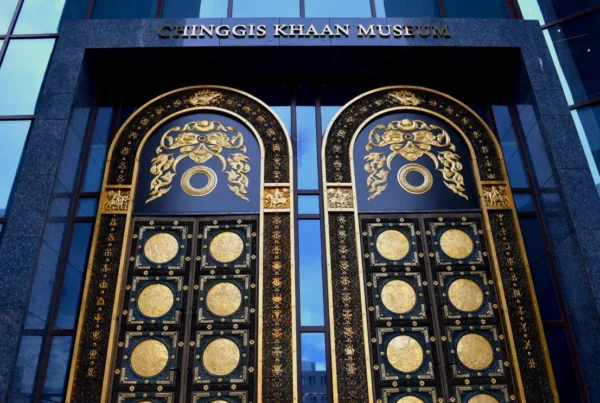Genghis Khan: Man of the Millennium – The Legacy of the Mongol Empire
Genghis Khan, the legendary Mongolian warrior and ruler, established the largest contiguous empire in history—the Mongol Empire. By defeating tribes across Northeast Asia, he united vast lands, forever shaping the world.
Early Life
Born around 1162 in north-central Mongolia as Temujin, Genghis Khan hailed from the Borjigin tribe, a descendant of Khabul Khan, who had briefly united the Mongols in the early 1100s. Mongol folklore foretold his destiny as a leader when he was born with a blood clot in his hand. His mother, Hoelun, taught him to navigate the turbulent tribal society through alliances.
At the age of 9, Temujin’s father was poisoned by the rival Tatar tribe. Upon his father’s death, Temujin returned home, only to face rejection from his clan. He overcame adversity by asserting leadership and eventually killing his half-brother, Bekhter, to cement his role as the family’s head.
At 16, Temujin married Borte, forming an alliance with the Konkirat tribe. His wife was kidnapped by the Merkit tribe but was later rescued. Despite doubts about Jochi’s paternity, Temujin accepted him as his son and fathered several more children, with Borte’s sons being designated for succession.
Genghis Khan Unites the Mongols
Temujin revolutionized Mongol leadership by appointing competent allies, rather than relatives, to key positions. He executed rival leaders and incorporated their followers into his clan. His military innovations included organizing soldiers into units of 10, regardless of kinship, and forbidding looting until total victory was achieved. By 1205, he defeated all major rivals, including his former friend, Jamuka. The next year, he unified the Mongol tribes under his rule, earning the title “Chinggis Khan,” meaning “Universal Ruler.”
Chinggis Khan Establishes an Empire
Under Genghis Khan’s leadership, the Mongol Empire became an organized and progressive society. He abolished hereditary aristocracy, prohibited the sale of women, and established laws against the enslavement of Mongols. He introduced a writing system, conducted a regular census, and granted diplomatic immunity to foreign ambassadors, promoting religious freedom.
Genghis Khan’s first major military campaign outside Mongolia targeted the Xi Xia Kingdom of northwestern China in 1209. His army, primarily cavalrymen armed with bows and arrows, used tactics such as false withdrawals to outwit their enemies. The Xi Xia ruler eventually submitted and paid tribute.
Next, Genghis Khan turned his attention to the Jin Dynasty in northern China, where his forces ravaged the countryside. From 1211 to 1214, they captured the capital Zhongdu (modern-day Beijing). Despite an agreement for tribute, Genghis Khan destroyed Zhongdu when the Jin ruler violated their terms.
In 1219, Genghis Khan launched a campaign against the Khwarezm Empire in present-day Turkmenistan, Uzbekistan, Afghanistan, and Iran. After the sultan broke a trade agreement and killed Mongol merchants and ambassadors, the Mongols responded by wiping out one city after another, including Bukhara, Samarkand, and Urgench. The Mongols’ terrifying reputation spread as they conquered vast territories.
His Death and Empire’s Legacy
Genghis Khan’s death in 1227 came after a fall from his horse during a campaign against the Xi Xia Kingdom. Despite his deteriorating health, he led his forces until his final days. His death marked the beginning of his descendants’ continued conquests, further expanding the Mongol Empire. His sons, including Ogodei and Khubilai, took control of Eastern Europe, the Middle East, and China, with the empire reaching from the Sea of Japan to the Caspian Sea.
Genghis Khan’s empire fractured in the 14th century, but his legacy as a conqueror and unifier lives on. His descendants continued to rule vast territories until they deposed the final Mongol ruler in 1920. Genghis Khan’s impact on world history, bridging Eastern and Western civilizations, is unparalleled.
To learn more about Genghis Khan and his remarkable empire, visit the Chinggis Khan Museum and other historical sites in Ulaanbaatar.


